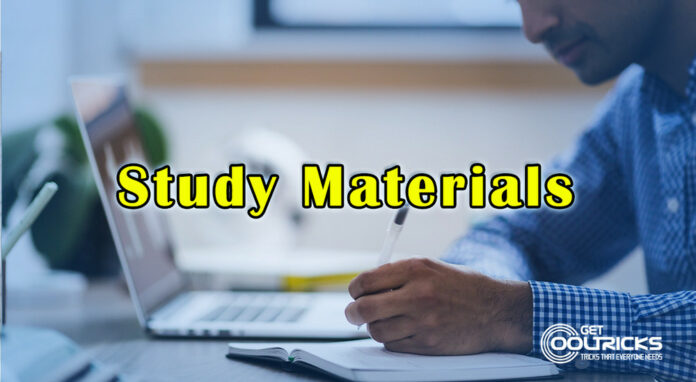1. Which is the protective tissue of the body?
(a) Epithelial tissue
(b) Muscular tissue
(c) Connective tissue
(d) None of these
Ans. (a) Epithelial tissue
Explanation – Epithelial tissue is a protective tissue present in the animal body.
2. Which tissue helps in healing?
(a) Connective tissue
(b) Muscular tissue
(c) granulation tissue
(d) Nervous tissue
Ans. (c) Granulation tissue
Explanation – In the earliest stages of wound healing, fibroblasts are few and far between, suspended together with tenuous new blood vessels in an edematous pink substance termed granulation tissue.
3. Which tissue helps in keeping the body warm in the following given options?
(a) Sweat gland
(b) Connective tissue
(c) Hair
(d) Fatty tissue
Ans. (d) Fatty tissue
Explanation – Adipose tissues are the main tissues that are involved in the insulation of the body and help keep the body warm.
4. In the following given options, Where is the Sebaceous gland located in the skin of an animal?
(a) Epidermis of the skin of the mammal
(b) Dermis of the skin of a mammal
(c) Epithelial stomach
(d) Epithelium of the intestine
Ans. (b) Dermis of the skin of a mammal
Explanation – Sebaceous glands are located in the dermis of the skin of a mammal.
5. In which one of the following types of connective tissues in animals does fat get stored?
(a) Adipocyte
(b) Chondrocyte
(c) Osteocyte
(d) Reticulocyte.
Ans. (a) Adipocyte
Explanation – Adipocytes are the major source of leptin production and here animal fat got stored.
6. In the following given options, Name the fluid which is secreted by the lachrymal gland.
(a) Sebum
(b) Mucus
(c) Tears
(d) Sweat
Ans. (c) Tears
Explanation – lachrymal secretions are commonly known as tears.
7. Camel hump is made up of which connecting tissue?
(a) Skeletal tissue
(b) Muscular tissue
(c) Cartilaginous tissue
(d) Adipose tissue
Ans. (d) Adipose tissue
Explanation – Camel hump is made from fatty adipose tissue. Adipose tissue is body fat, which is a type of loose connective tissue composed of adipocytes.
8. Cartilage present in the body is?
(a) A Muscular tissue
(b) An epithelial tissue
(c) A connective tissue
(d) A germinal tissue
Ans. (c) A connective tissue
Explanation – Cartilage is an important structural component of the body.
9. What is the lifespan of WBC?
(a) 48 hours
(b) 20 days
(c) 120 days
(d) 100 days
Ans.(b) 20 days
Explanation –The lifetime of WBC in the lymph system is 13 to 20 days, and the existence of WBC is lost in the lymph system.
10. Which is not a connective tissue in the following given options?
(a) Blood
(b) Bone
(c) Nerves
(d) Cartilage
Ans. (c) Nerves
Explanation – Connective tissue is the most abundant, widely distributed, and historically variable of the primary tissues.
11. The urinary bladder is lined with?
(a) Simple epithelium
(b) Stratified epithelium
(c) Pseudostratified epithelium
(d) Transitional epithelium
Ans. (d) Transitional epithelium
Explanation – The Urinary bladder is lined with transitional epithelial tissue that can stretch significantly to accommodate large volumes of urine.
12. Teeth are mainly made up of?
(a) Enamel
(b) Dentine
(c) Odontoblast
(d) Marrow
Ans. (b) Dentine
Explanation – Dentine is a calcified tissue of the body and along with enamel, cemented and pulp is one of the four major components of teeth.
13. What crown of teeth is made of?
(a) Cartilage
(b) Dentine
(c) Enamel
(d) Chitin
Ans. (c) Enamel
Explanation – The crown of a tooth is that part of the tooth that is covered with enamel and is the part usually visible in the mouth.
14. What is collagen?
(a) Fibrous protein
(b) Fat
(c) Epithelial tissue
(d) None of these
Ans. (a) Fibrous protein
Explanation – Collagen is the main structural protein in the extracellular matrix found in the body’s various connective tissues.
15. Bone-forming cells are?
(a) Osteroclasis
(b) Osteoblasts
(c) Chondrociasts
(d) Chondroblasts
Ans. (b) Osteoblasts
Explanation – Osteoblast is a large cell responsible for the synthesis and mineralization of bone during bone formation and bone remodelling.
16. What is the outer ear made of?
(a) Muscle
(b) Smooth muscle
(c) Cartilage
(d) Bones
Ans. (c) Cartilage
Explanation – The outer ear is made up of cartilage and skin.
17. Which is the contractile protein of a muscle?
(a) Dublin
(b) Tropomyosin
(c) All
(d) Myosin
Ans. (d) Myosin
Explanation – Myosin is formed of myofibril, which is a very fine contractile fibre.
18. Which membrane covers the lungs?
(a) Pericardium
(b) Pleura
(c) Peritoneum
(d) Serosa
Ans. (b) Pleura
Explanation – The membranes covering the lungs are known as pleural membranes.
19. Who discovered animal cells?
(a) Moulder
(b) Gottlieb Haberlandt
(c) Robert Hooke
(d) Funk
Ans. (c) Robert Hooke
Explanation – The animal cells were discovered by Robert Hooke in 1665.
20. What type of tissue is the brain?
(a) Nervous tissue
(b) Connective tissue
(c) Epithelial tissue
(d) Muscle tissue
Ans. (a) Nervous tissue
Explanation – Nervous tissue is found in the brain, spinal cord, and nerves.


